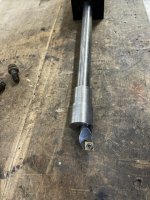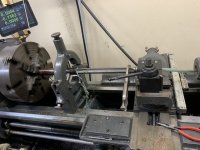All,
I need to put a blind hole 12” deep x 1.35” diameter in 6Al-4V Titanium bar stock. I need the bottom of the hole to be flat. My first thought was use a ~1.25” gun drill to establish the hole, then bring it to size with a boring bar, which would get me the flat bottom as well. The issue I’m having is finding a bar that will reach that deep but requires a small enough minimum hole size to fit. Anyone have any experience with this type of scenario? FYI: I’m a hobbyist with access to the gun drill, but I’m on my own for the bar, so I don’t want to drop a ton of money on it. Any insight would be appreciated. Thanks!
I need to put a blind hole 12” deep x 1.35” diameter in 6Al-4V Titanium bar stock. I need the bottom of the hole to be flat. My first thought was use a ~1.25” gun drill to establish the hole, then bring it to size with a boring bar, which would get me the flat bottom as well. The issue I’m having is finding a bar that will reach that deep but requires a small enough minimum hole size to fit. Anyone have any experience with this type of scenario? FYI: I’m a hobbyist with access to the gun drill, but I’m on my own for the bar, so I don’t want to drop a ton of money on it. Any insight would be appreciated. Thanks!





